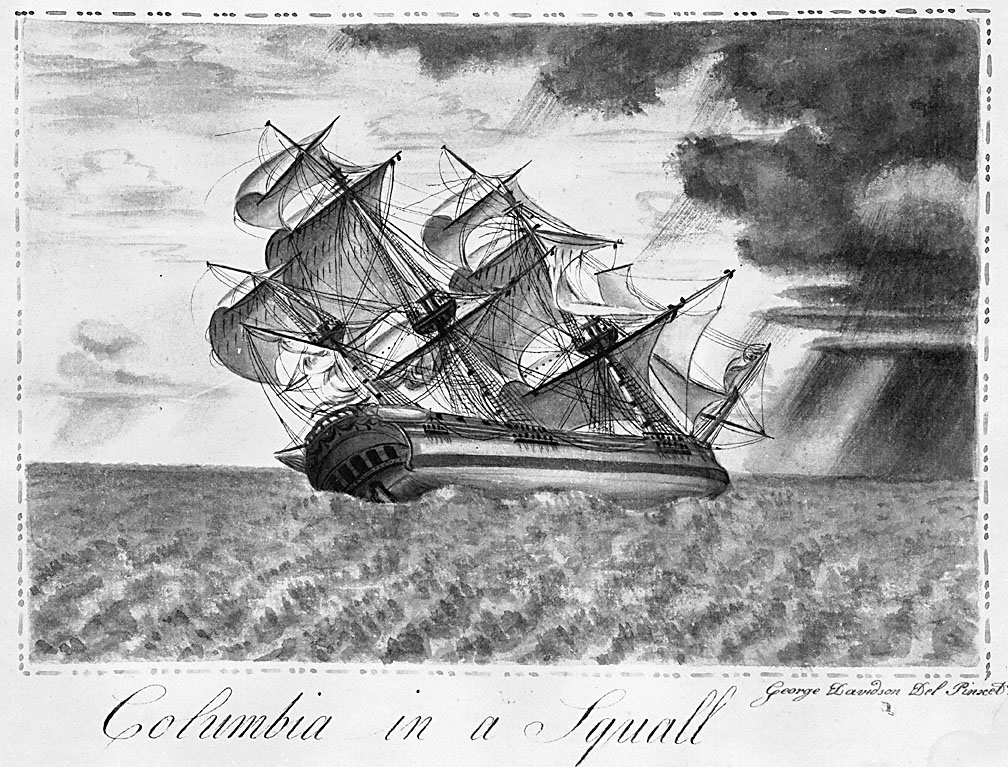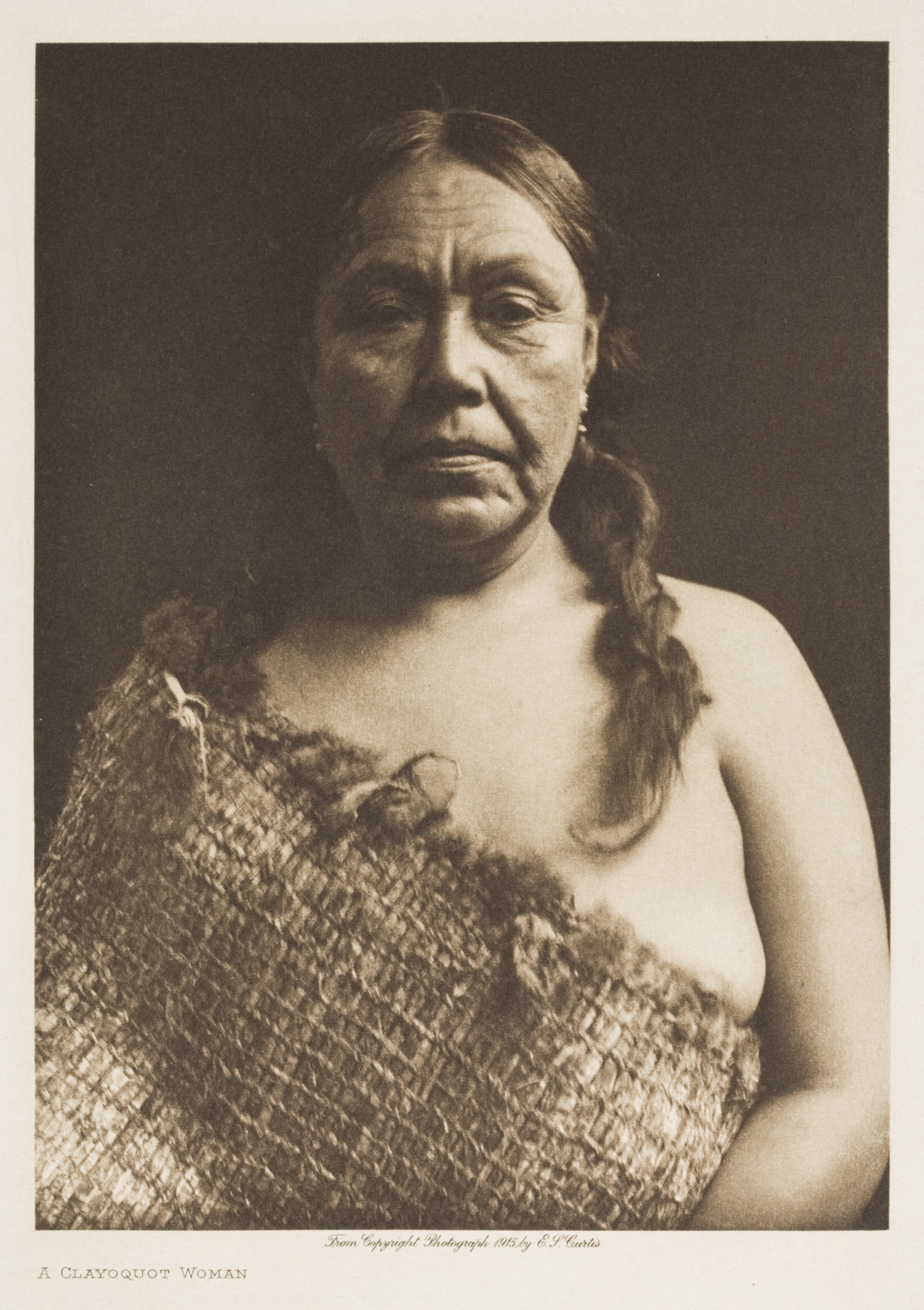|
Opitsaht
Opitsaht, spelled also as Opitsat and Opitsitah, is a First Nations settlement/community in the Southwest area of Meares Island, Clayoquot South, British Columbia. This peninsula-like region is the home to Tla-o-qui-aht First Nations of the Nuu-chah-nulth nation. The Tla-o-qui-aht are an Indigenous group from the Pacific Northwest region in the lower Vancouver area, known for their lifestyle revolving around the marine life trade and culture within the community. During the era of the Maritime Fur Trade, Opitsaht was the seat of Wickaninnish, chief of the Tla-o-qui-aht. In 1791 the Spanish explorer Francisco de Eliza estimated a population of about 2,500 people. According to John Boit in 1792 the village contained 200 ornately carved buildings typical of Nuu-chah-nulth villages. John Kendrick (American sea captain), John Kendrick made a strong alliance with Wickaninnish in the summer of 1791. Although Wickaninnish remained an ally of Kendrick, the good feelings towards Americans t ... [...More Info...] [...Related Items...] OR: [Wikipedia] [Google] [Baidu] |
John Boit
John Boit Jr. (15 October 1774 – 8 March 1829) was one of the first Americans involved in the maritime fur trade. He sailed as fifth mate under Captain Robert Gray (sea captain), Robert Gray on the second voyage of the ''Columbia Rediviva'', 1790–1793. During the voyage he wrote a short but important journal in which he described the first time the Columbia River was located by Europeans or European Americans. From 1794–1796 he captained the ''Union'' on another maritime fur trading circumnavigation voyage from New England to the Pacific Northwest and China. Later he captained other vessels including the ''George'' and the slave ship ''Mac''. Early life and family John Boit Jr. was born on 15 October 1774 to John Boit Sr. and Sarah Brown Boit, both of Boston. John Boit Sr. was a "West India merchant" who came to Boston from England. The West Indies were at the time an integral part of the transatlantic slave trade and the French, British, Spanish, Danish, and Dutch all oper ... [...More Info...] [...Related Items...] OR: [Wikipedia] [Google] [Baidu] |
John Kendrick (American Sea Captain)
John Kendrick (1740–1794) was an American sea captain during the American Revolutionary War, and was involved in the exploration and maritime fur trading of the Pacific Northwest alongside his subordinate Robert Gray. He was the leader of the first US expedition to the Pacific Northwest. He is known for his role in the 1789 Nootka Crisis, having been present at Nootka Sound when the Spanish naval officer José Esteban Martínez seized several British ships belonging to a commercial enterprise owned by a partnership of companies under John Meares and Richard Cadman Etches. This incident nearly led to war between Britain and Spain and became the subject of lengthy investigations and diplomatic inquiries. Kendrick was the first American to try to open trade with Japan. He began the Hawaiian sandalwood trade. He was killed during an exchange of cannon salutes with the ship Jackal when one of the cannons was loaded, purportedly by accident. John Kendrick was instrumental in pi ... [...More Info...] [...Related Items...] OR: [Wikipedia] [Google] [Baidu] |
Robert Gray (sea-captain)
Robert Gray (May 10, 1755 – ) was an American merchant sea captain who is known for his achievements in connection with two trading voyages to the northern Pacific coast of North America, between 1790 and 1793, which pioneered the American maritime fur trade in that region. In the course of those voyages, Gray explored portions of that coast and in the year 1790 he completed the first American circumnavigation of the world. He was also noted for coming upon and naming the Columbia River, in 1792, while on his second voyage. Gray's earlier and later life are both comparatively obscure. He was born in Tiverton, Rhode Island, and may have served in the Continental Navy during the American Revolutionary War. After his two famous voyages, he carried on his career as a sea captain, mainly of merchantmen in the Atlantic. He intended a third voyage to the Northwest Coast, but his ship was captured by French privateers, during the Franco-American Quasi-War. Later in that conflict, Gray ... [...More Info...] [...Related Items...] OR: [Wikipedia] [Google] [Baidu] |
Meares Island
Meares Island is one of the many islands surrounding the Village of Tofino, British Columbia, Canada. Its name was given in 1862 by George Henry Richards, captain of , in honor of John Meares. The island is located in the Clayoquot Sound region and is the location of Opitsat, the main village of the Tla-o-qui-aht First Nations, and was the location of Fort Defiance, a short-lived American fur-trading post founded by Captain Robert Gray. Meares Island is reachable by boat or water taxi. Meares Island became historically significant shortly after 1984, when the Nuu-chah-nulth and environmentalist groups such as Greenpeace and Friends of Clayoquot Sound began protesting forestry giant MacMillan Bloedel's potential harvesting activities. The Nuu-chah-nulth, with significant cooperation from environmental groups, eventually erected a blockade, preventing MacMillan Bloedel MacMillan Bloedel Limited was a Canadian forestry company headquartered in Vancouver, British Columbia. ... [...More Info...] [...Related Items...] OR: [Wikipedia] [Google] [Baidu] |
Tla-o-qui-aht First Nations
The Tla-o-qui-aht First Nations () are a Nuu-chah-nulth First Nation (band government) in Canada. They live on ten reserves along the Pacific Rim National Park Reserve on Vancouver Island, British Columbia. The band is part of the Nuu-chah-nulth Tribal Council. There were 618 people living in the Tla-o-qui-aht reserves in 1995. Their primary economic activities are fishing and tourism. Introduction Tla-o-qui-aht, whose ancestral border is determined by the height of land, the direction of the rivers flow and as far as the eye can see on the ocean, is a confederacy of aboriginal groups who historically were independent from one another. Tla-o-qui-aht First Nations is the Indian band mandated under the federal ''Indian Act'' to deliver civil and human services to Tla-o-qui-aht. The hereditary governance systems and structures of Tla-o-qui-aht that exist today, and that have existed since time immemorial have a dynamic relationship with the Indian band administration and wit ... [...More Info...] [...Related Items...] OR: [Wikipedia] [Google] [Baidu] |
Fort Defiance (British Columbia)
Fort Defiance was a small outpost that the crew of the ''Columbia Rediviva'' built as winter quarters during 1791–1792 on Meares Island in present-day British Columbia, Canada. American merchant and maritime fur trader Captain Robert Gray (sea captain), Robert Gray was in command. Prelude In early August 1791, John Kendrick (American sea captain), John Kendrick arrived in Clayoquot Sound and acquired land from Wickaninnish, chief of the Tla-o-qui-aht, in exchange for firearms. An Opitsaht village was nearby. Kendrick fortified a small island, and like his Nootka Sound base, called it Fort Washington. In late August, Robert Gray, of the same trading company, arrived on the ''Columbia Redivia''. Following a short overlap, Kendrick sailed away on the ''Lady Washington'' for China. Fort Defiance On September 19, Gray located a narrow cove suitable for wintering the ''Columbia'', and building a sloop. Two days later, construction of their winter quarters began. Completed by Septembe ... [...More Info...] [...Related Items...] OR: [Wikipedia] [Google] [Baidu] |
Clayoquot Sound
Clayoquot Sound is located on the west coast of Vancouver Island in the Provinces and territories of Canada, Canadian province of British Columbia. It is bordered by the Esowista Peninsula to the south, and the Hesquiaht Peninsula to the North. It is a body of water with many inlets and islands. Major inlets include Sydney Inlet, Shelter Inlet, Herbert Inlet, Bedwell Inlet, Lemmens Inlet, and Tofino Inlet. Major islands include Flores Island (British Columbia), Flores Island, Vargas Island, and Meares Island. The name is also used for the larger region of land around the waterbody (essentially its watershed). Origin of the name The name Clayoquot (other), Clayoquot is derived from the name of a subgroup of the Nuu-chah-nulth, who lived at Clayoqua 6, Clayoqua. In the late 20th century, this group merged into the multi-group band government known as the , meaning "different" or "changing" in their language. History First Nations have inhabited the area for thousands of ... [...More Info...] [...Related Items...] OR: [Wikipedia] [Google] [Baidu] |
Kingfisher (sloop)
''Kingfisher'' was a sloop engaged in merchant trading out of Victoria, British Columbia, Canada to First Nations peoples around Vancouver Island and adjoining waters. During trading with the Ahousaht Nation, a part of the Nuu-chah-nulth in Clayoquot Sound late in 1864 the vessel was attacked and its captain, a Captain Stephenson, and three crew members were massacred. , a small gunboat, was dispatched to the scene but due to overwhelming superiority of Ahousaht forces waited for reinforcements, which came in the form of the screw frigate and its fifty guns. Holding offshore from Marktosis, one of the main Ahousaht communities, Admiral Denman, commander of the vessel, demanded the surrender of Chapchah, who had masterminded the killings. When the residents refused, Denman opened fire on the village, destroying it. Subsequently, the village of Moyat and others were destroyed by shellfire and incendiary rockets from ''Sutlej''. See also * List of ships in British Columbia ... [...More Info...] [...Related Items...] OR: [Wikipedia] [Google] [Baidu] |
Native American Shamans
Native may refer to: People * '' Jus sanguinis'', nationality by blood * '' Jus soli'', nationality by location of birth * Indigenous peoples, peoples with a set of specific rights based on their historical ties to a particular territory ** Native Americans (other) In arts and entertainment * Native (band), a French R&B band * Native (comics), a character in the X-Men comics universe * ''Native'' (album), a 2013 album by OneRepublic * ''Native'' (2016 film), a British science fiction film * ''The Native'', a Nigerian music magazine In science * Native (computing), software or data formats supported by a certain system * Native language, the language(s) a person has learned from birth * Native metal, any metal that is found in its metallic form, either pure or as an alloy, in nature * Native species, a species whose presence in a region is the result of only natural processes * List of Australian plants termed "native", whose common name is of the form "native . . ." ... [...More Info...] [...Related Items...] OR: [Wikipedia] [Google] [Baidu] |
Hereditary Chiefs In Canada
Hereditary chiefs in Canada are leaders within chosen First Nations in Canada who represent different houses or clans and who, according to some interpretations of case law from the Supreme Court of Canada, have jurisdiction over territories that fall outside of band-controlled reservation land. Passed down intergenerationally, hereditary chieftaincies are rooted in traditional forms of Indigenous governance models which predate colonization. The Indian Act (1876), still in force today, imposed electoral systems to fill band council positions. Although recognized by and accountable to the Government of Canada, band chiefs do not hold the cultural authority of hereditary chiefs, who often serve as knowledge keepers responsible for the upholding of a First Nation's traditional customs, legal systems, and cultural practices. When serving as Lieutenant Governor of British Columbia, Judith Guichon postulated that the role of hereditary chiefs mirrored that of Canada's constitution ... [...More Info...] [...Related Items...] OR: [Wikipedia] [Google] [Baidu] |






